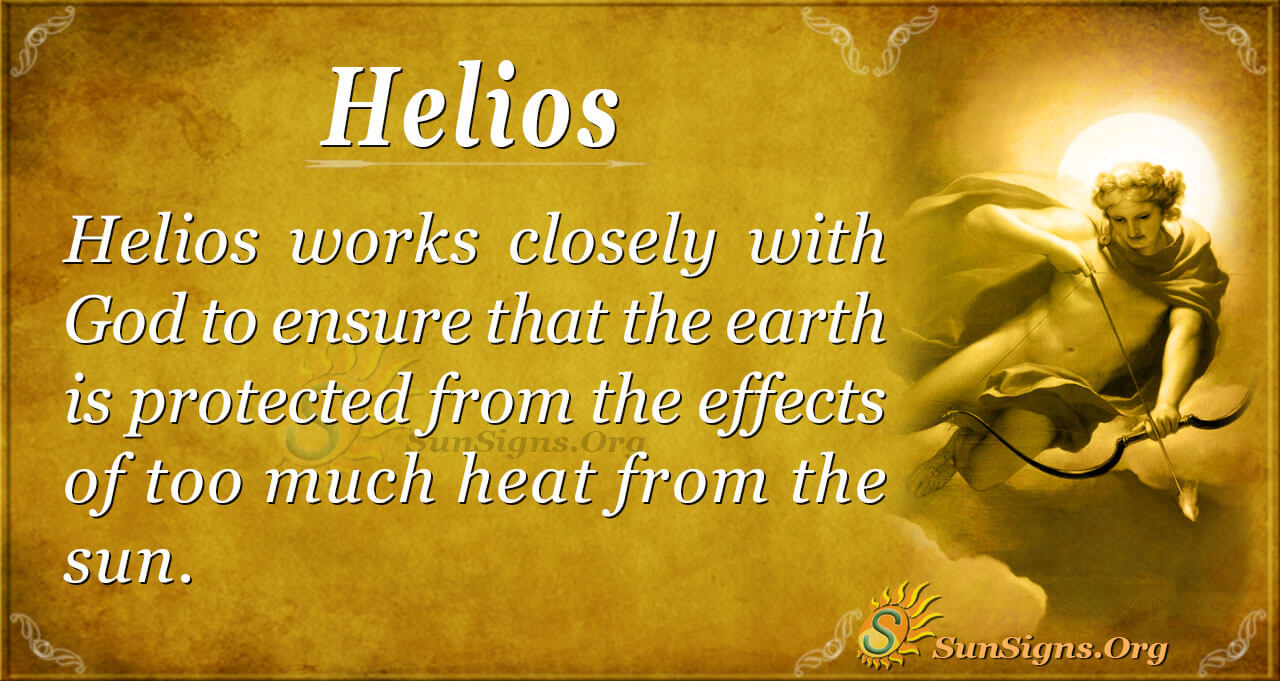

Much of the iron and bronze was reforged from the various weapons Demetrius's army left behind, and the abandoned second siege tower may have been used for scaffolding around the lower levels during construction. According to most contemporary descriptions, the statue itself was about 70 cubits, or 32 metres (105 feet) tall. Other sources place the Colossus on a breakwater in the harbour.

The interior of the structure, which stood on a 15-metre-high (49-foot) white marble pedestal near the Rhodes harbour entrance, was then filled with stone blocks as construction progressed. Ancient accounts, which differ to some degree, describe the structure as being built with iron tie bars to which brass plates were fixed to form the skin. Timeline and map of the Seven Wonders of the Ancient World, including the Colossus of RhodesĬonstruction began in 292 BC.
#Helios greek god series
Since 2008, a series of as-yet-unrealized proposals to build a new Colossus at Rhodes Harbour have been announced, although the actual location of the original monument remains in dispute. In 653, an Arab force under Muslim general Muawiyah I conquered Rhodes, and according to the Chronicle of Theophanes the Confessor, the statue was completely destroyed and the remains sold this account may be unreliable.

According to the Suda, the Rhodians were called Colossaeans (Κολοσσαεῖς), because they erected the statue on the island. John Malalas wrote that Hadrian in his reign re-erected the Colossus, but he was mistaken. In accordance with a certain oracle, the Rhodians did not build it again. It collapsed during the earthquake of 226 BC, although parts of it were preserved. One of the Seven Wonders of the Ancient World, it was constructed to celebrate the successful defence of Rhodes city against an attack by Demetrius Poliorcetes, who had besieged it for a year with a large army and navy.Īccording to most contemporary descriptions, the Colossus stood approximately 70 cubits, or 33 metres (108 feet) high – approximately the height of the modern Statue of Liberty from feet to crown – making it the tallest statue in the ancient world. The Colossus of Rhodes ( Ancient Greek: ὁ Κολοσσὸς Ῥόδιος, romanized: ho Kolossòs Rhódios Greek: Κολοσσός της Ρόδου, romanized: Kolossós tes Rhódou) was a statue of the Greek sun-god Helios, erected in the city of Rhodes, on the Greek island of the same name, by Chares of Lindos in 280 BC. Colossus of Rhodes, artist's impression, 1880


 0 kommentar(er)
0 kommentar(er)
